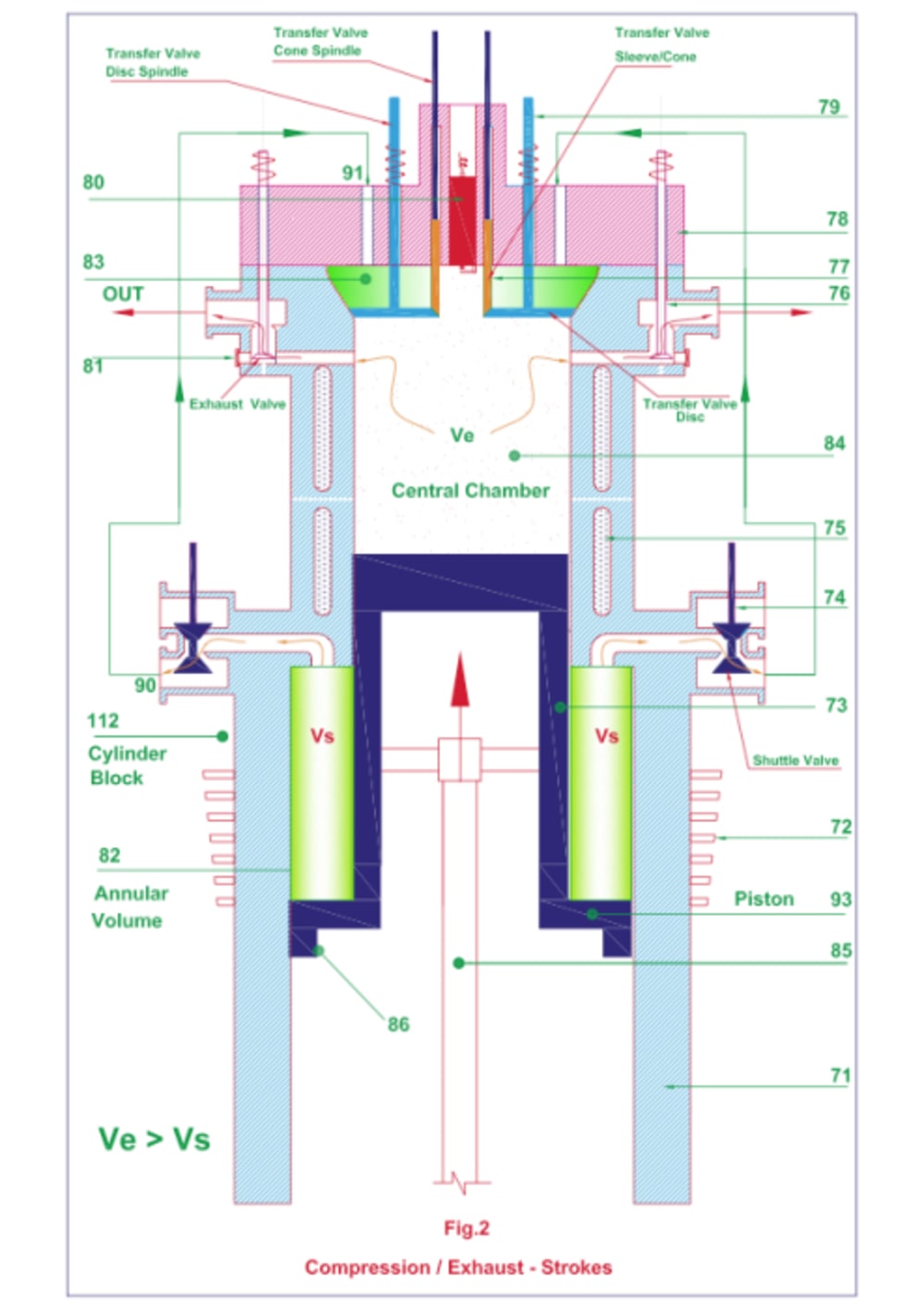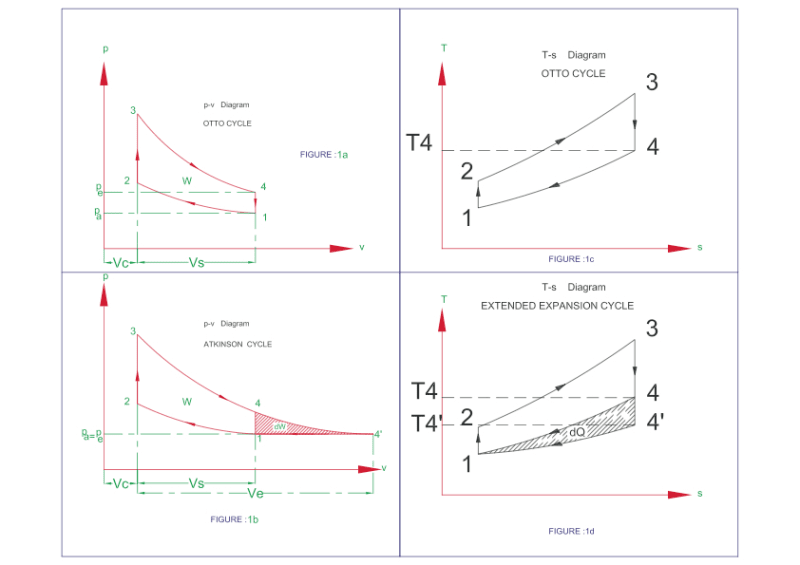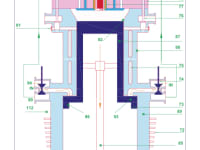This proposal relates to conceptual design of "valved two stroke engine with extended expansion". In a four stroke engine, power stroke occurs once in a two rotation whereas in a two stroke power stroke occurs once in each rotation. Theoretically a two stroke engine produces double the power of four stroke engine .Due to absence of valves in 2 stroke engine, some part of the fresh charge inducted leaves out through exhaust .This causes loss of mileage and Hydrocarbon emission .The proposed engine has Transfer valve which prevents such carry over and at the same time power stroke occurs for each rotation. The "extended expansion" refers that the pressure at the end of power stroke is brought nearly to atmospheric pressure. By this arrangement we can convert some more thermal energy into work and increase mileage, emit lower temperature to environment, reduce noise pollution. The engine has stepped piston and cylinder in construction which forms an annular chamber and a central chamber of volumes Vs and Ve where Ve ÷ Vs is approximately = 2. The annular chamber acts as compressor where suction and compression of charge takes place. The power and exhaust stroke takes place in the central chamber.
Suction Stroke; Fig.1.During suction stroke, piston moves down, the shuttle valve communicates with the inlet port 94 and air fuel mixture is inducted into the annular chamber.
Compression stroke: Referfig.2: Piston moves from 180? to 310?, the shuttle valve port position changes to 90. Compressed air/ charge is discharged out through transfer manifold (90-91) and temporarily gets filled above the transfer valve.
Transferring operation: Around 50? before TDC, the exhaust valve (76) closes, cutting the venting of exhaust gas of previous cycle. Simultaneously, the transfer valve cone (77) moves up from its seat of TV disc causing a gap and the charge gets transferred into the central chamber. At 330? the TV disc also trials behind cone, compressing the left over fresh charge above it and transfers into the central chamber.
Ignition and combustion : Refer fig.1, Around 20? before TDC , the charge is ignited by the spark plug (80) and power is produced which pushes the piston down and simultaneously suction stoke is effected in annular chamber.
When piston moves upward from 180? to 360?, the exhaust valve is opened and the products of combustion is discharged out to atmosphere simultaneously compression takes place in annular chamber and cycle is repeated.
All the four strokes are completed in one complete rotation without any carry over fresh charge with the exhaust . The engine is an hybrid of two and four stroke engine. It may be noted that a smaller volume Vs of charge is burnt and expanded in a higher volume Ve so that the pressure during expansion stroke expands until its pressure reaches nearly to atmospheric level following Atkinson Cycle.
Further details regarding the proposal can also be seen from Google Search using the key word "Improved hybrid internal combustion engine with extended expansion"
Like this entry?
-
About the Entrant
- Name:Ravi Paramanandam
- Type of entry:individual
- Hardware used for this entry:Pentium SystemSoftware used for this entry:Auto CAD, Pro-E
- Patent status:pending








